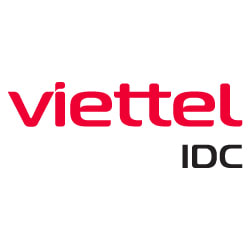The following is a guest article from Dale Quayle, CEO of Digital Fuel.
Depending on the size, companies can spend anywhere between three to seven percent of revenue on IT technologies. While this is a significant portion of a company's overall budget, when asked to justify the amount being spent, CIOs often struggle to explain the true value of these investments.
Most CIOs are aware of how budgeting conversations go: "Why do you spend $200 million dollars on IT every year? What value is that $200 million having on the bottom line?" No data? Big problem. If the value of IT cannot be explained to the business, the costs will always be too high.
Pinpointing the underlying value is increasingly important for CIOs because many organizations are realizing that simply "keeping the lights on" and providing employees with sufficient IT support is no longer enough.
To remain competitive, IT investment needs to help drive business efficiency and enable productivity across an organization. This means that if deeper insight on IT spend is not provided, it will inevitably lead to the directive to cut costs.
The conversations CIOs are having with each line of business, as well as the with the entire C-suite, are shifting. Successful CIOs are talking about how IT costs are creating value and showing numbers to prove it.
Price is what you pay, value is what you get
In order to get the most bang for their buck, companies must challenge themselves and move away from focusing solely on the price tag. Moving the discussion to focus on the value of what is being delivered, rather than the element of cost, is essential. It's crucial to make this distinction when talking about IT.
Some of the key questions CIOs should ask themselves when deciding what value they want from IT services include:
- Why is a company buying these services?
- How does it incorporate with the overall delivery chain that a company has in IT?
- How do companies consume these services within the business?
By changing the conversations CIOs are having with the C-suite, the value businesses are constantly looking for in IT technologies will be easier to achieve.
How to get the value you've been searching for
Once companies understand the difference between cost and value, they need to decipher what investments are currently providing real value and what changes need to be made. It's essential for CIOs to provide tools which allow for effective collaboration between each line of business in order to understand individual goals for the coming years.
Once CIOs have a complete organizational view — one which consists of overarching business goals abd individual department's priorities, annual targets and revenue and profit goals — they will be better equipped to understand the entire picture and make more educated decisions on the investments and services providing the greatest value.
Once a complete vision of value is determined, a better narrative of cost and outcomes can be reported to the C-suite. While this is a different way of determining value, understanding the value of IT technologies from the back end and working forward is a modern necessity.
A few questions to keep in mind when determining the value of IT technologies include:
- What is the end user benefit?
- What is the value that the business is trying to derive from whatever service it is trying to deliver?
- How do businesses then measure the quality of the service being delivered?
Practical value of IT
One major step in allowing a business to better determine the value of IT technologies is to decipher and employ the right metrics. IT spend as a percent of revenue is an extremely poor and misleading metric and one which ultimately doesn't work for CIOs.
By implementing a technology business management cost analysis, there are numerous metrics CIOs can use to hone in on the real, practical value of IT on the business, including:
- Metrics that allow better decisions to be made
- Metrics that are granular and uncover opportunities
CIOs who are in the position to provide a comprehensive and trusted assessment of the true value of IT on the business will be relied on heavily for critical decision making.
IT technologies are only considered valuable when they are bringing value to the business. By focusing on the business value of IT technologies, better business conversations will be had.
Managing IT technologies is no longer simply about service delivery. Instead, it's about delivering organizational value. To do this, CIOs need to reset their thinking and utilize resources to enable collaboration across divisions and create a sustainable cost transparency culture.













